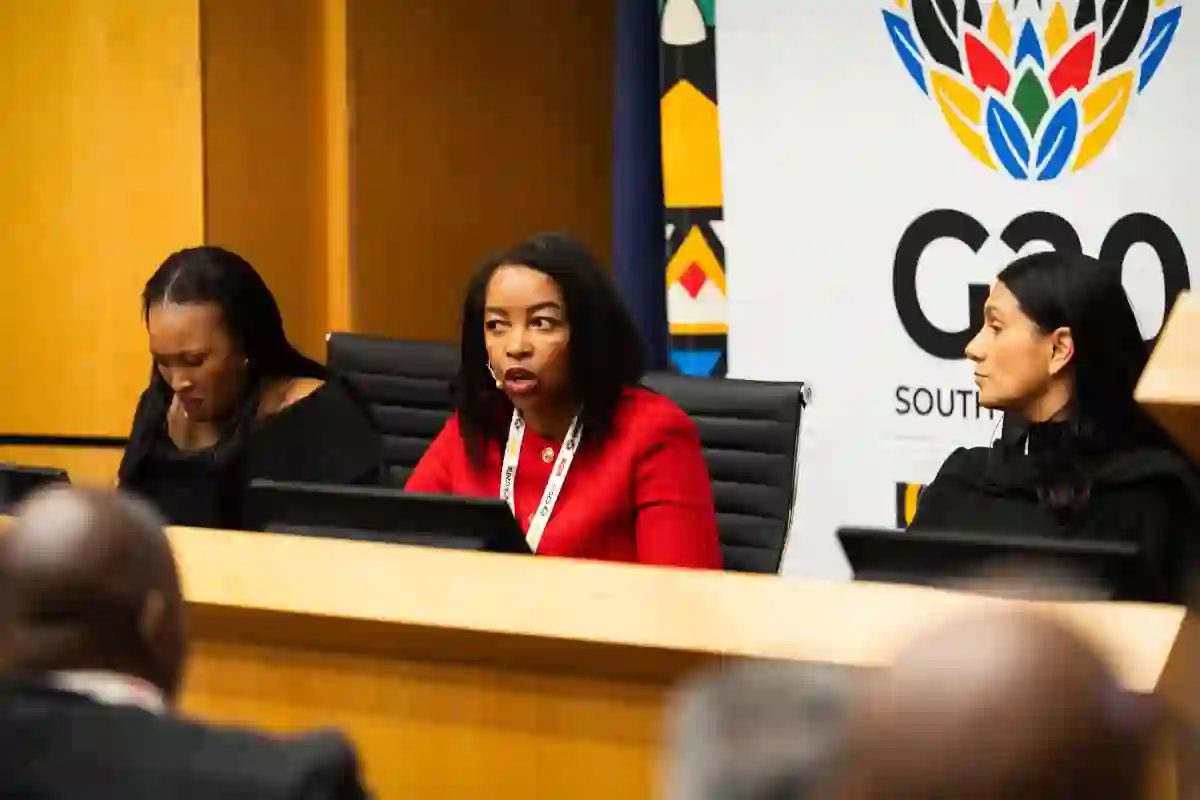In a world where everything from banking to schoolwork is increasingly online, not having access to the internet can feel like being shut out from modern life.
That’s the reality for millions of South Africans—and it’s an issue that leaders are trying to urgently fix.
One of those leaders is Phuthi Mahanyele-Dabengwa, the Chairperson of the B20 South Africa Digital Transformation Task Force and CEO of Naspers South Africa.
Speaking at a recent International Telecommunication Union (ITU) event in Johannesburg on 18 July, she shed light on what’s stopping South Africa from becoming fully digitally connected—and how we can get there.
Despite Progress, A Quarter of South Africans Are Still Offline
South Africa has made some big strides in the digital space—everything from smart TV White Space experiments to rolling out new spectrum auctions that come with social benefits.
But, Mahanyele-Dabengwa pointed out, there’s still a major gap: around 25% of the population is not yet online.
And two major hurdles are keeping that percentage stubbornly high: lack of infrastructure and the high cost of connectivity.
Poor Infrastructure Is Keeping Rural Areas in the Dark
While city dwellers often take fast, stable internet for granted, many people living in rural provinces like Limpopo and the Eastern Cape still don’t have access to reliable broadband.
The necessary infrastructure just isn’t there yet, and building it out takes serious investment and coordination.
Even in areas where towers exist, Mahanyele-Dabengwa noted that rural users face slower internet speeds and more frequent signal drops compared to their urban counterparts—by as much as 15% slower, according to data from Open Signal.
When Data Exists, It’s Still Far Too Expensive
The second major barrier? Affordability.
It’s not just about having a signal; it’s about whether people can actually afford to use it.
Mahanyele-Dabengwa referenced GSMA stats showing that South Africa’s poorest households are spending up to 12% of their monthly income just to buy 1GB of mobile data.
That’s six times higher than the global benchmark, which puts affordable access at just 2% of monthly income.
The cost of smartphones and basic digital devices is also out of reach for many, making the issue even worse.
How South Africa Can Bridge the Digital Divide
So what’s the solution? Mahanyele-Dabengwa laid out a clear three-part plan to help connect the remaining quarter of South Africans still offline.
1. Make Devices and Data More Affordable
-
Reduce or eliminate VAT and import taxes on entry-level phones and other digital devices.
-
Offer incentives for mobile network providers to lower data costs, especially in poorer communities.
2. Invest in Rural Infrastructure
-
Focus on “last-mile” connectivity projects that bring service to remote areas.
-
Take a page from Vodacom’s R430 million rural 4G initiative in the Eastern Cape, which connected 19 villages that had never had access before. Projects like this need to become the norm, not the exception.
3. Simplify the Rules and Help Smaller Providers
-
Speed up licensing for spectrum and reduce red tape at local government level to help telcos build networks faster.
-
Support smaller internet service providers and community networks by giving them easier access to national infrastructure.
Connectivity Is No Longer a Luxury—It’s a Lifeline
In her closing remarks, Mahanyele-Dabengwa made it clear: internet access is no longer optional.
It’s essential for education, employment, healthcare, and even basic communication.
Without it, millions are left behind.
Her message was direct: South Africa must treat digital access as a national priority—because without it, there’s no such thing as equal opportunity in today’s world.
